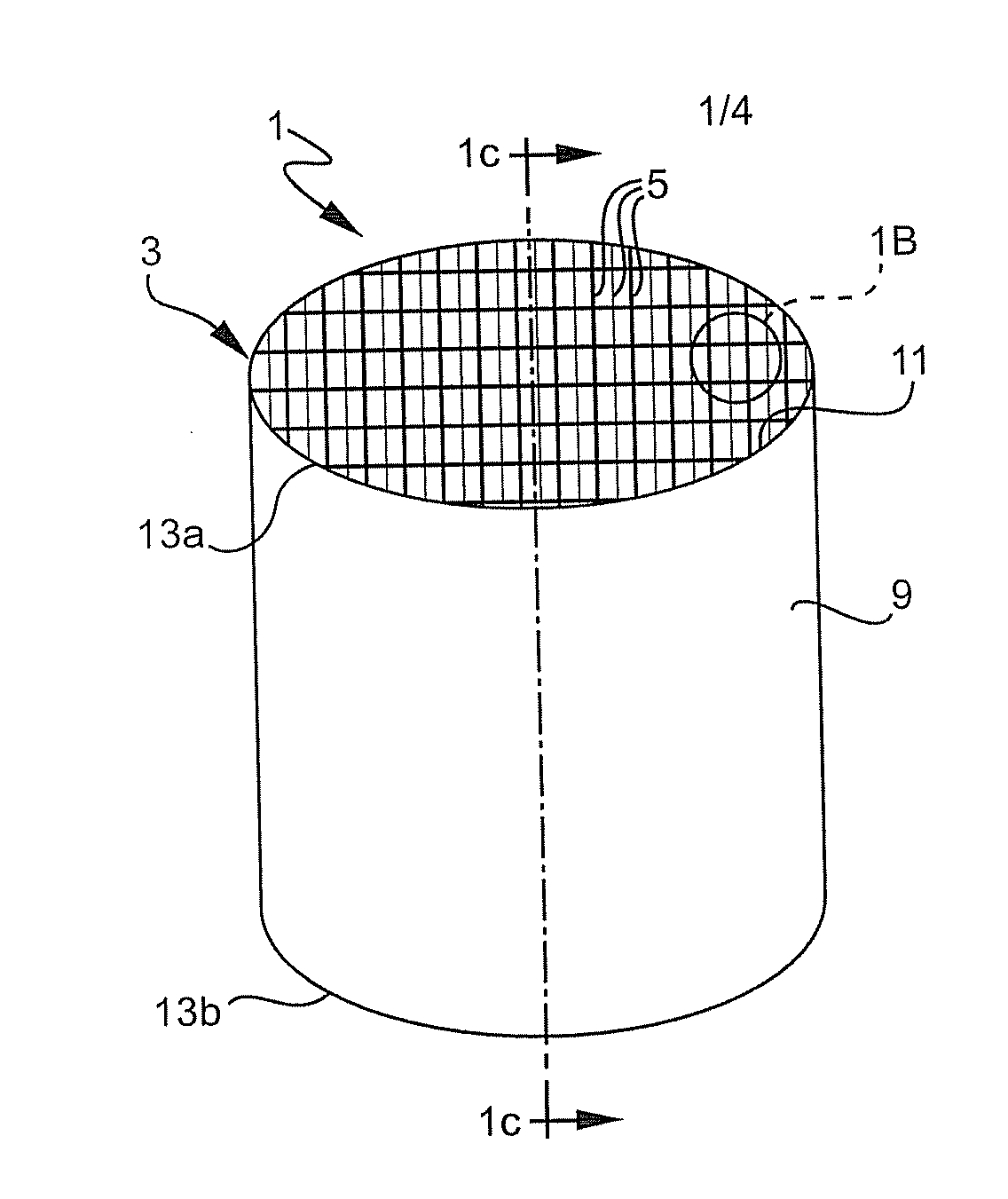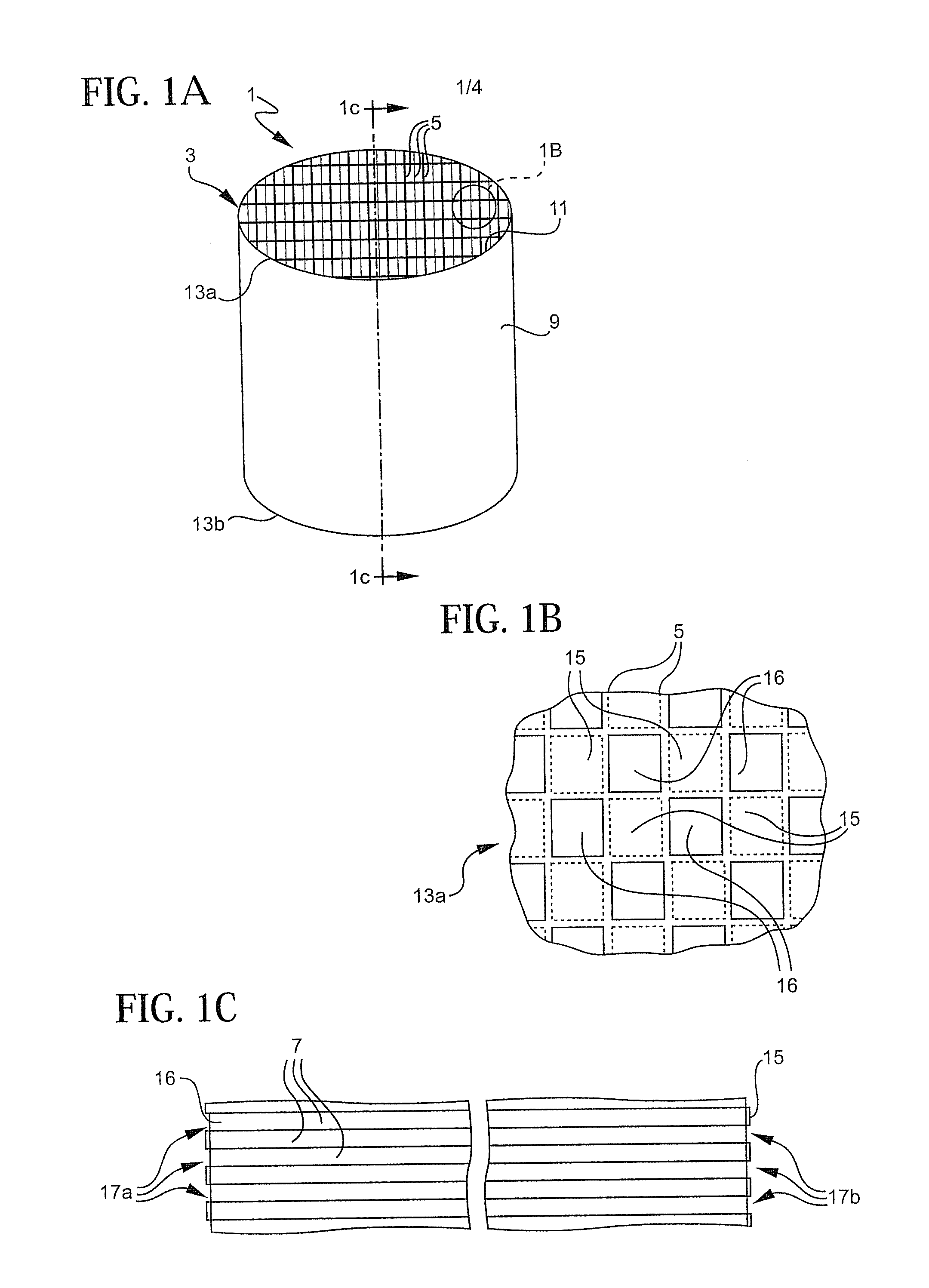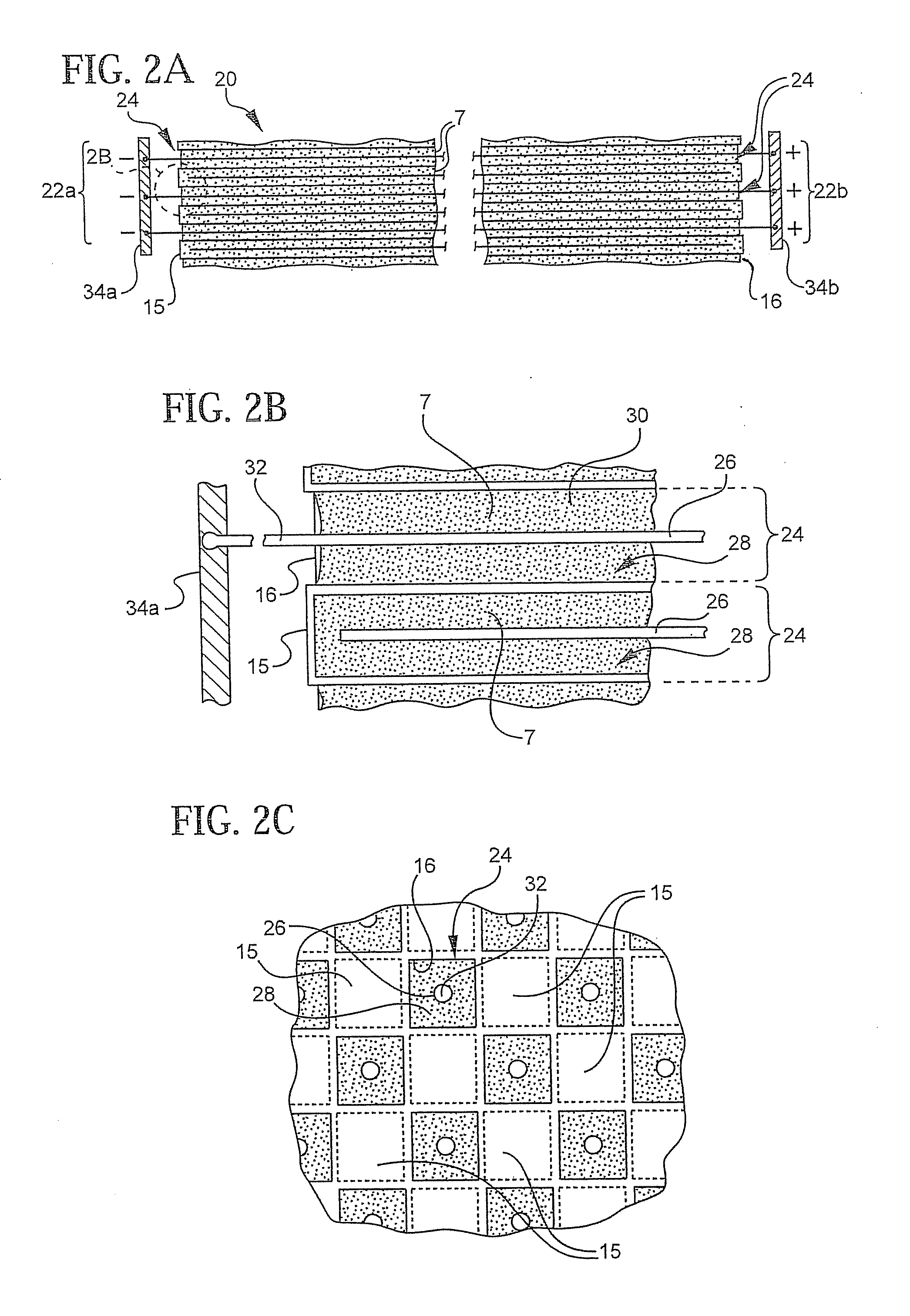Co-extrusion method of fabricating electrode structures in honeycomb substrates and ultracapacitor formed thereby
a technology of honeycomb substrate and electrode structure, which is applied in the manufacture of contact parts, cell components, transportation and packaging, etc., can solve the problems of reducing the available electrode area and hence the capacitance, the two-electrode carbon-based design does not yield efficient electrical power, and the honeycomb-type ultracapacitors have not yet realized their full potential in providing a low-cost, high-energy storage device. , the effect of high processing speed
- Summary
- Abstract
- Description
- Claims
- Application Information
AI Technical Summary
Benefits of technology
Problems solved by technology
Method used
Image
Examples
Embodiment Construction
[0023]With reference to FIGS. 1A-1C, the invention is preferably applied to ceramic honeycomb substrates 1 of the type used as diesel particulate filters. Such substrates 1 include a network 3 of web walls 5 which define a plurality of elongated channels 7. While the channels 7 are illustrated as having a square cross-section in FIG. 1B, they may just as easily be hexagonal or some other polygonal shape. The web walls 5 forming the channels 7 are typically between 2.0 and 5.0 mils thick, and the density of the channels 7 may be between 300 and 2,000 channels per square inch. The ceramic substrate 1 further includes an outer skin 9 which is typically cylindrical in shape, and having a thickness of approximately three times that of the web walls 5. The network 3 of web walls 5 is integrally connected to the inner surface 11 of the outer skin 9. The honeycomb substrate 1 has generally planar opposing ends 13a, 13b as shown.
[0024]With particular reference to FIGS. 1B and 1C, the honeyco...
PUM
| Property | Measurement | Unit |
|---|---|---|
| surface area | aaaaa | aaaaa |
| diameter | aaaaa | aaaaa |
| diameter | aaaaa | aaaaa |
Abstract
Description
Claims
Application Information
 Login to View More
Login to View More - R&D
- Intellectual Property
- Life Sciences
- Materials
- Tech Scout
- Unparalleled Data Quality
- Higher Quality Content
- 60% Fewer Hallucinations
Browse by: Latest US Patents, China's latest patents, Technical Efficacy Thesaurus, Application Domain, Technology Topic, Popular Technical Reports.
© 2025 PatSnap. All rights reserved.Legal|Privacy policy|Modern Slavery Act Transparency Statement|Sitemap|About US| Contact US: help@patsnap.com



